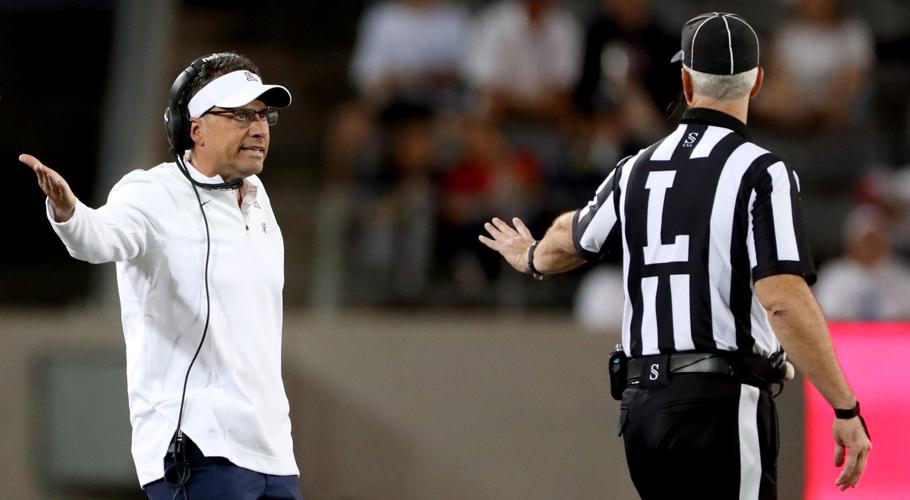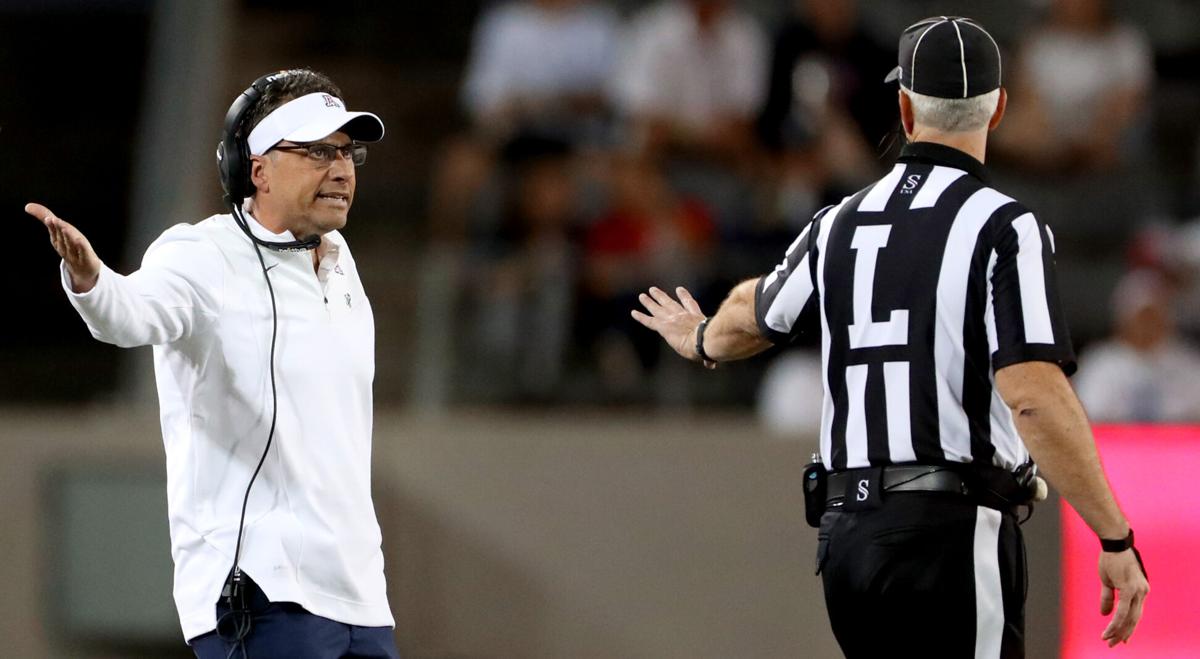Some of the penalties could be explained. Some remained a mystery days later.
The inescapable conclusion: If you’re trying to break a double-figure losing streak, you can’t commit double-figure infractions.
“That’s just way too many penalties,” Arizona coach Jedd Fisch said after his team was flagged a dozen times against UCLA. “Twelve penalties was ridiculous for us.”
It wasn’t necessarily an outlier. Since the opener against BYU, in which they were penalized four times, the Wildcats have averaged nine penalties per game. That would put Arizona in a tie for 126th in the nation with Arizona State. As it is, the Wildcats’ average of eight penalties has them tied for 115th. They rank 10th in the Pac-12.

Editor’s note: Each week throughout the football season, we’ll take an in-depth look at the Arizona Wildcats from a statistical perspective.
In this week’s Colorado edition of “Cats Stats,” we’ll delve a little deeper into Arizona’s infractions case (no, not that one) and see what the numbers reveal. We’ll also look at how penalties directly impacted the outcome of the UCLA game.
Let’s start with this: If they were to sustain their current pace, the Wildcats would accomplish something they haven’t done in over 20 years. The last time Arizona averaged eight or more penalties over a full season was 2000 — the last year of the Dick Tomey era. The Wildcats averaged 8.2 penalties per game that season. They finished 5-6. (That figure was actually down from 1999, when Arizona averaged 10.4 penalties — its most since joining the Pac-10/12.)
Over the past 10 seasons, Arizona twice has averaged 7.9 penalties, in 2011 and ’18. The Wildcats’ records those season: 4-8 and 5-7. In every other season over the past decade, Arizona averaged 6.8 infractions or fewer, with a low of 4.0 in 2013. The Wildcats’ record that year: 8-5.
Whether fewer penalties mean more wins, or vice versa, is not an absolute.
Twenty teams average less than five penalties per game. Eleven of them are over .500, three are 3-3 and six are under .500. The 11 winning teams include undefeated UTSA, Kentucky and Wake Forest – programs that are roughly in the same weight class as Arizona.
Sixteen teams average eight ore more penalties per game. Eight are over .500, four are 3-3 and four are under .500. The eight winning teams include five from the SEC: Alabama, Florida, Mississippi State, Arkansas and Ole Miss.
Besides conference affiliation, what do those teams have in common? They have more talent than Arizona. They have higher-scoring offenses than Arizona. They can afford to make more mistakes than Arizona.
The Wildcats are in rebuilding mode. They have lost 17 straight games. Fisch and his staff are trying to raise the talent level after years of middling recruiting. It takes time. Arizona isn’t there yet.
In the meantime, Fisch and his staff have to ensure that the Wildcats do all the little things right. As the rising penalty totals illustrate, they currently are failing in that regard.
That was never more evident than in the UCLA game. Arizona lost 34-16. The Wildcats again failed to reach the 20-point plateau. Penalties played a significant role in their latest red-zone breakdowns.
On the opening drive, Arizona faced third-and-goal from the 9. Tight end Alex Lines was flagged for a false start. That made it third-and-goal from the 14 and didn’t give Fisch a lot of options. The Wildcats had to settle for a field goal.
In the third quarter, with the Bruins leading 17-13, Arizona advanced to the UCLA 15. On third-and-1, receiver Boobie Curry was flagged for a personal foul – an illegal block below the waist on a bubble screen. The penalty created third-and-16 from the 30. Another field goal made it 17-16.
Whether that was a legitimate call is up for debate. Neither Fisch nor Curry believed he did anything wrong. Curry barely contacted the defender. But that doesn’t change the fact that the call was made and that it was yet another “self-inflicted wound,” as Fisch calls them.
Later in the third, with the score 24-16, Arizona appeared to have converted a third-and-6. The Wildcats would have had first-and-10 at the UCLA 49. Instead, tight end Bryce Wolma was ruled to have been an ineligible receiver because of where he lined up on the play. Arizona couldn’t convert on third-and-11 and had to punt.
One could argue, justifiably, that penalties also benefited the Wildcats. Two facemask infractions and a pass-interference foul against UCLA fueled Arizona’s lone touchdown drive in the second quarter.
Overall, though, penalties hurt the Wildcats more than they helped them. Another example: Two defensive penalties (holding and offside) gave the Bruins a pair of first downs on their first TD drive in the first quarter.
The types of fouls Arizona committed had to be a source a frustration among the UA staff. (They most certainly were among the UA fandom.) The Wildcats were flagged for five false starts. At home.
Some of that had to do with UCLA’s “stemming” — shifting by the defensive line just before the snap. But Arizona knew that was coming and didn’t have crowd noise as an additional distraction.
Back in spring, Fisch said he could live with a certain number of penalties that occur “when the game is going on” — things like holding and pass interference. The ones “that don’t have to do with the game of football” – pre-snap penalties such as false starts or offsides – “are the ones that give me the most fits,” Fisch said.
Among Arizona’s 40 penalties, false starts represent a quarter of them. In second place: offsides (five).
Fisch is undoubtedly having some fitful nights.






